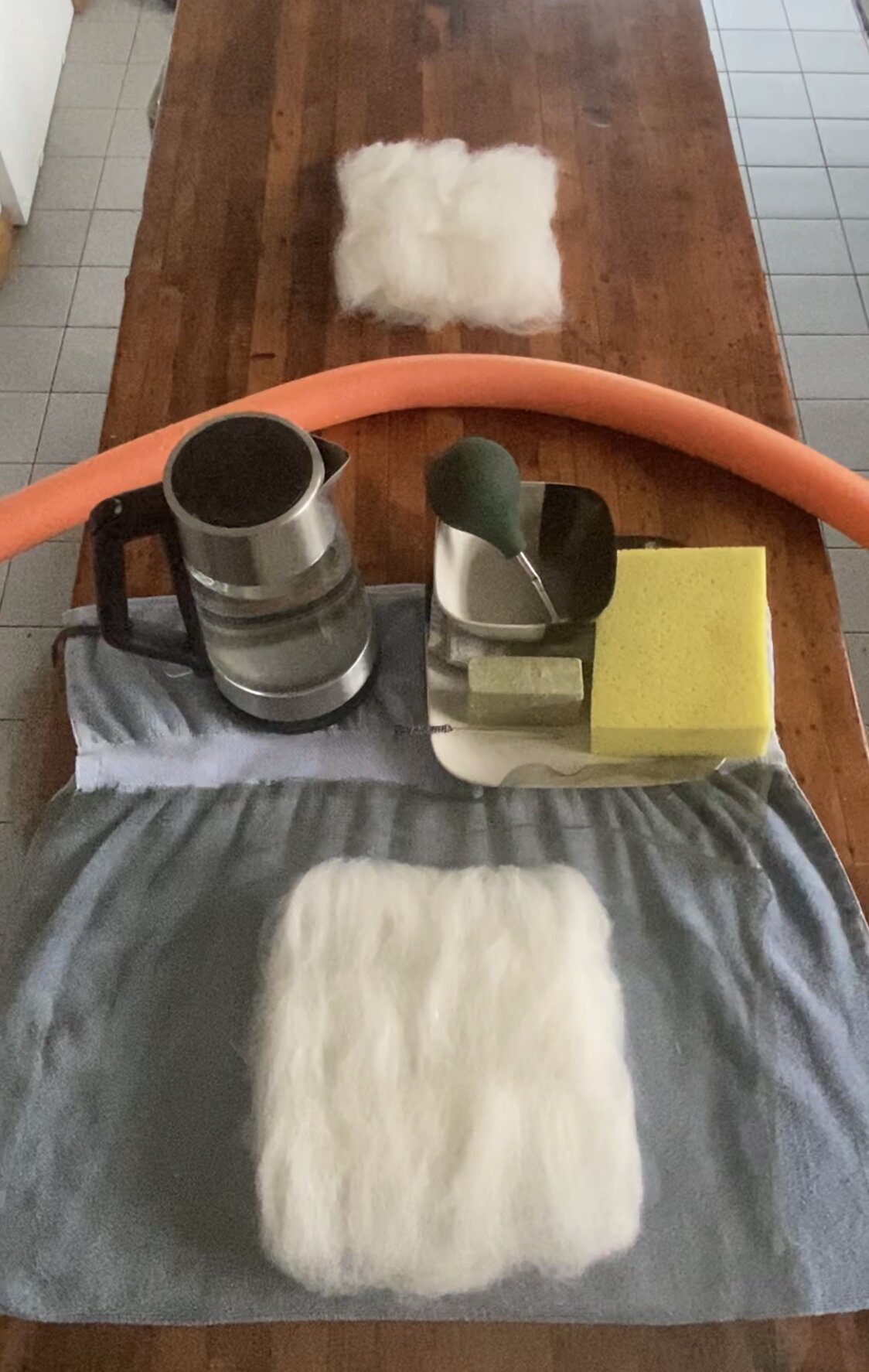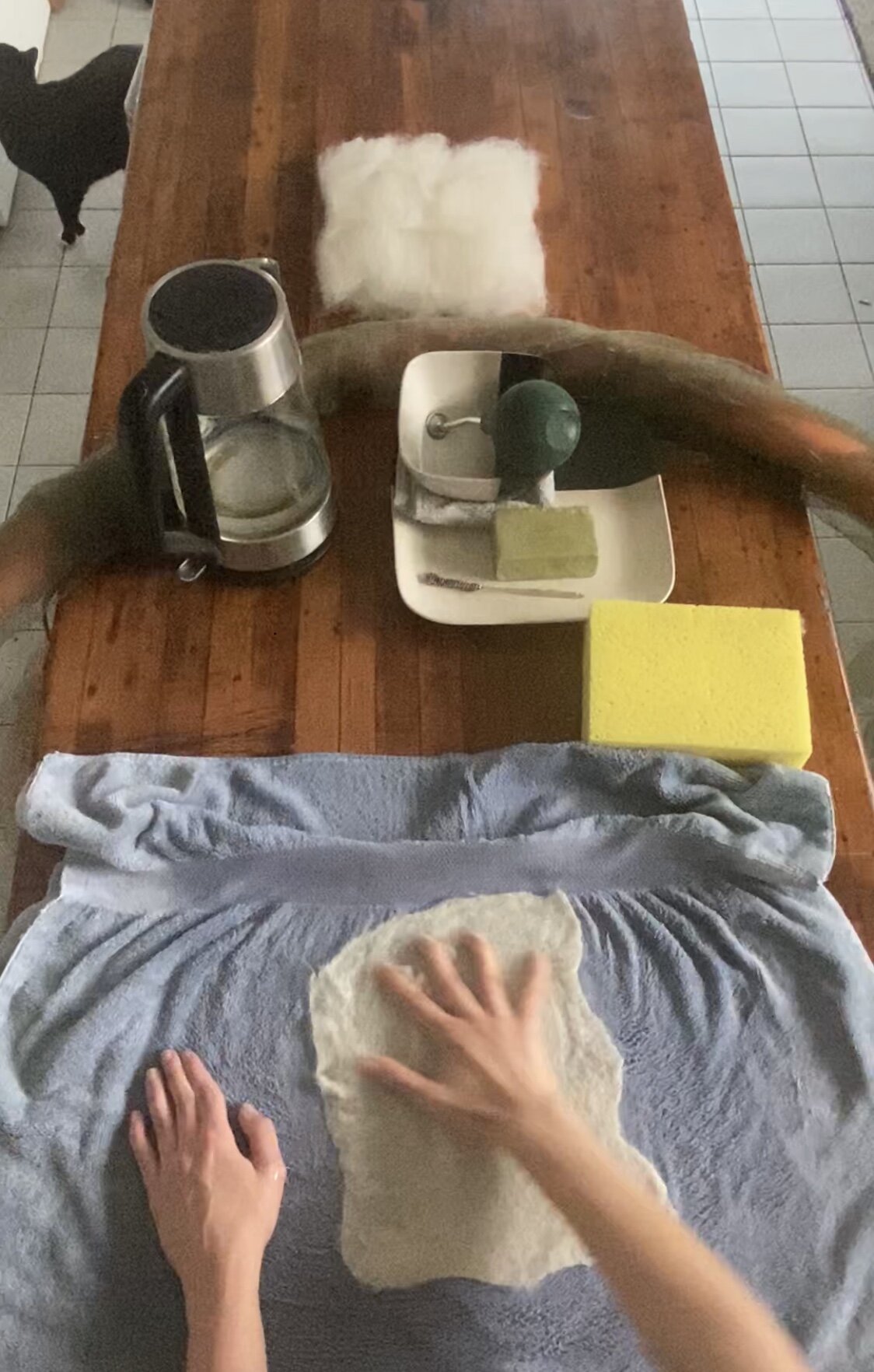
Cultivating White Clouds
Felt Mantle, Afghanistan
Gifted by Joan Livingstone
Scythian Empire
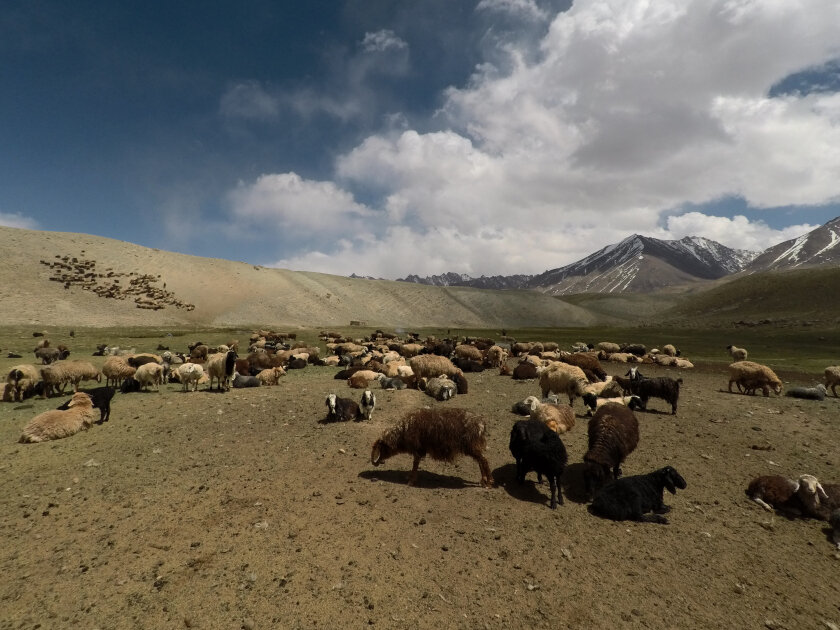
“Heroditus referred to the Scythians as living in white clouds.”
— Joan Livingstone
Derived from the ancient Greek word “skythia”- given to the sprawling grasslands spanning north and east of the Black Sea- the Scythian empire inhabited territories throughout Eurasia from the Black Sea across Siberia to the borders of China from the 11th century BC to the 2nd century AD. The term’s etymology has a relationship to the Indo-European word “skythes”, meaning shepherd, and signifies the deep relationship between the region, its indigenous vegetation, and the nomadic peoples and animals who lived off the land in deep synergy.
Closely tied to economic circumstances and the rhythms of the earth, nomadism was a mobile way of life centered around livestock herding, pastural growth, and intricate knowledge of the earth. As P.N. Fedoseev points out in Nomads of Eurasia, it should be noted that “nomadism is sometimes seen as a primitive, backwards phenomena that retarded the development of civilization.” This is a grave oversimplification based around Eurocentric beliefs and “imperfect knowledge of the facts.” Nomadic cultures were incredibly adaptive to their surroundings and created complex, original, and sustainable cultures that were often imitated by surrounding sedentary peoples. While their knowledge and expertise cannot be fully understood from the written texts of Ancient Greece, Assyria, Babylon, and China, ancient artifacts hold an immense amount of knowledge that can unfold with close looking.
As a nomadic warrior empire, Scythians did not typically cultivate earthen soil for agriculture and sustenance but rather, reared herds of domesticated animals on the land including sheep, cattle, horses, goats, and more for sustenance and raw material. Naturally, woolen protein fiber became a staple building block within cultural traditions for the individual fibrous units had magnificent capacity to be manipulated into greater wholes. As M.E. Burkett illuminates in The Art of the Felt Maker, tribal Scythian princes were actually thought to have descended from “the bright heaven” or “the white cloud”.
Through felting, spinning, twisting, braiding, weaving, knitting, crocheting, and more woolen textile techniques- Scythian craftsmen and craftswomen created clothing, tools, home textiles, vessels, in addition to architectural membranes used for yurts and other mobile structures making wool fiber a highly valued and sacred material of the region which, to this day, influence the textile traditions of present-day Afghanistan.
Felt Mantles
The Afghan custom of wearing felt mantles and presenting them to important persons on special occasions emerges from ancient Achaemenid Persian traditions in which felt coats and woven woolen cloths were gifted to kings, satraps, priests, and other high-ranking dignitaries of the Persian court. As highlighted by Veronika Gervers at the Royal Ontario Museum in The Art of the Felt Maker, “the social significance of Afghan felt coats,”and the embroidery imbued upon them, “could be considered more important than their practical aspects,” such as warmth and protection.
Primarily gifted to men, males were also the individuals traditionally involved in the making of the mantles as well. Due to the nonwoven nature of felt as a textile, felt mantles were not typically cut from uniform lengths of yardage but rather, were made from a single piece of felt crafted using a mould. Moulds were used so the textile would not adhere to itself during the wet felting process. If gaps in the garment’s construction called for additional felt material, additional hand piecework was often required to fill in the missing areas by hand.
Felt piecework traditions likely developed from ancient Scythian skin, lether, or hidework manipulation techniques that would have also typically been performed by men. The thick nature of the felted textile also required special strength and care in terms of stitching and embroidering through the bulky material. While Afghan embroidery traditions are held today by both men and women, it is likely that in this particular case, the embroidery techniques would have been performed by men.
Collar Lining
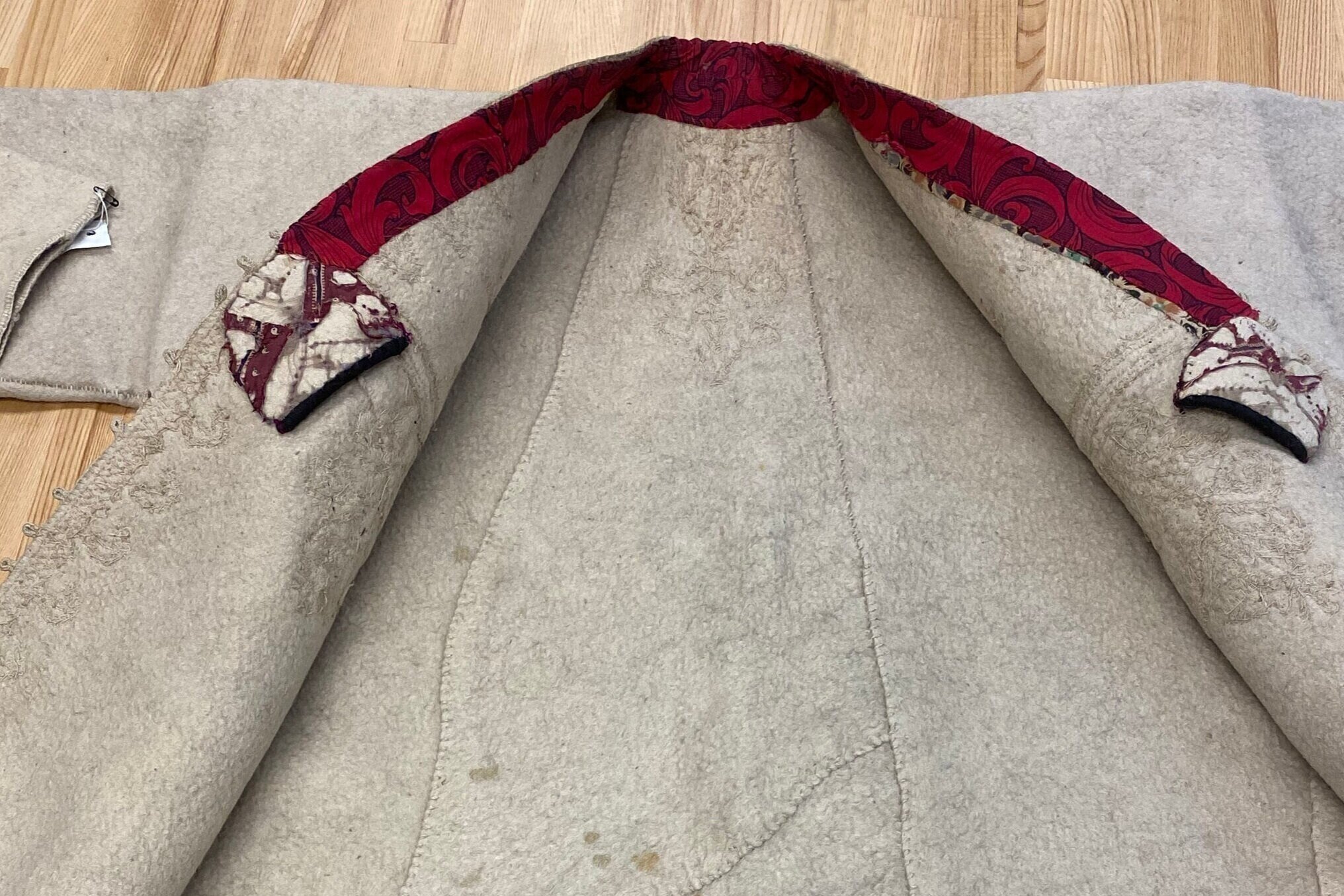
Two layers of woven printed collar linings reinforce areas of wear and tear as well as function as design elements.

Overtop stitching by hand was used to secure the woven linings onto the felted wool ground.

Here, we can see that the red and black lining was actually appliquéd on top of an original lining fabric- the original comprised of an ivory base with a multicolor print overtop. The second lining's purpose may have been for reinforcement, repair, a stylistic choice, or all of the above.

This image was taken under Dino-Lite magnification and captures the two collar linings in the area just above the interior pocket. On the left, we see a red ground woven fabric printed with black motifs. In the center, we see an ivory ground woven fabric printed with multi-colored motifs. On the right, we see the felted wool fiber ground of the overall garment.

This micro image of the red ground lining illuminates the fabric's weave structure. The yarns are Z-spun and have been woven into a plainweave structure. The plainweave fabric was then dyed red and printed with lattice and filagree motifs in black.

In this micro image, we get a closer look at the ivory ground lining fabric and see that the yarns here were also Z-spun but woven into a variation of a plainweave in which the warp yarns alternate between thick and thin gauges every other warp. During weaving, two weft passes would travel through paired warps- one thick and one thin- while the next two weft passes travel through single warps. Under repeat, this creates a variation of a plainweave or a broken twill. As a final step in processing, the ivory fabric was printed with a floral motif of orange, green, grey, brown, and black.
Interior Pockets with Quilted Appliqué

Here, we see one of two interior pockets on the garment's frontside opening near the waistline. Each pocket was sculpted utilizing the same felting process seen on the body of the garment. A barrier or mould would have been placed inside the pocket to prevent it from felting shut during agitation. The pocket opening was bound with a twill fabric stitched on by hand which would have helped to prevent wear and tear. On the exterior face of the pockets, a lightweight woven fabric was quilted on to the felted ground by hand. The quilting stitches are geometric in nature and mimic the lattice and triangular motifs often found in Pre-Islamic and Scythian design with some of the earliest records appearing on ceramics. The pockets are quite small and are intended to hold parts of the Quran making them a beautifully poetic and private feature of the garment as they would have lied close to the wearer's body at all times. It is also thought that pocket features in this area could also act as handles so that the wearer could cinch the open mantle closed in harsh weather.
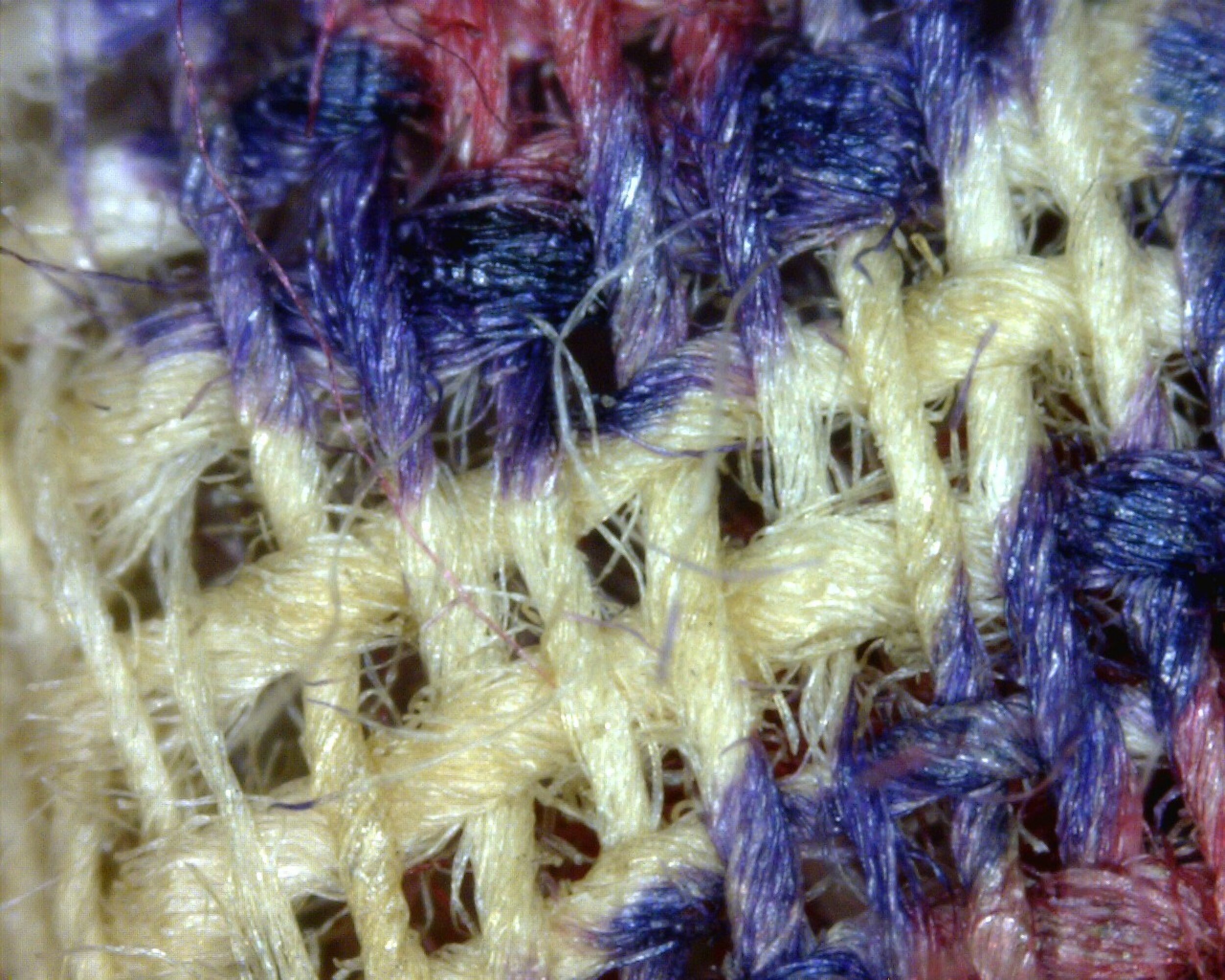
This micro image of the pocket's exterior quilted fabric illuminates Z-spun yarns that have been woven into a 2/1 S-twill. Although much of the woven fabric has disintegrated over time, several remnants still remain. The fabric has an ivory ground and appears to have been originally printed with a multicolor paisley design. The fabric is extremely delicate and finely woven which speaks to the sacred and protective nature of the pocket and it's function.

This micro image depicts a small section of the felted wool pocket where much of the finely woven twill has disintegrated due to high usage. In this image, a few blue and red fragments of the twill remain stitched on to the felted pocket ground. Blue and red pigment from the printed twill has also began to transfer on to the ivory stitching threads.
Embroidered Motifs
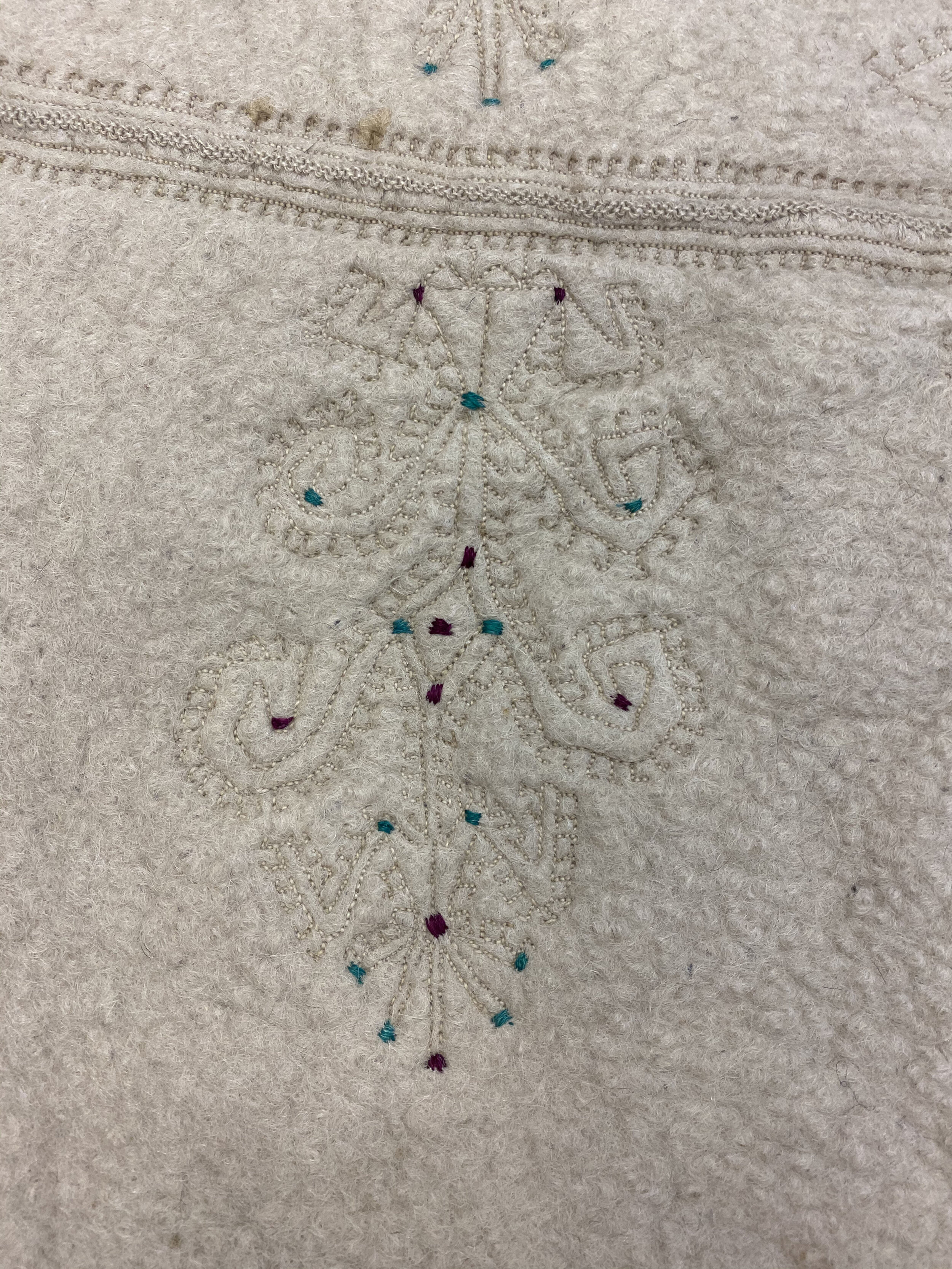
Embroidery at frontside chest area of garment. Here we see the same Running Dog, Wave, or Scroll design of the backside neckline appear on the frontside of the garment near the chest area. As M.E. Burkett points out in 'The Art of the Felt Maker', "despite present systematic research into Afghan motifs, much of the interpretation remains speculative." Another possible interpretation of this motif is an inverted Tree of Life- an ancient symbol found throughout the Arab and Achaemenid Persian worlds which represents the interconnectedness of all beings in the universe.

Embroidery at backside neckline of garment. The Running Dog, Wave, or Scroll design is one of the most commonly found motifs in Afghan design. Scroll bands are also common throughout the classical world found in carved stone, mosaics, paintings, and other decorative arts. The motif repeated in mirror image was often used as a border or dividing pattern and may depict reciprocal parts or energies- light and dark, good and evil- as well as their continual tensions.

Embroidery at frontside center hem of garment. Horn motifs are common in both felt and carpet designs in Afghanistan. The goat's horn, also known as kochboynuzu or kojanak soynak, is an important symbol in many nomadic groups across Asia as horns were often used in the making of artifacts, tools, ceremonial rhytons and other vessels. The motif is especially common amongst tribes in Afghanistan where ram's horns are often placed above the entry doorway of households as symbol of protection and good luck.
Finishing Techniques
The edges of the sleeve cuffs have been finished by hand utilizing a blanket stitch. The blanket stitch is often called upon to reinforce the edges of thick materials as the stitch has the ability to wrap around bulky areas of fabric thickness. As it’s name suggests, it’s often used to finish unhemmed blankets but it makes a great choice when finishing nonwovens as they do not contain inherent selvedges.
Here we see the bottom edge hem of the coat’s body. Two rows of straight stitch have been applied by hand both as a design element and reinforcement function. Braided cording has also been stitched down by hand at the very edge of the garment’s hem and also may have been braided by hand.
At the bottom edge hem of the frontside opening on the garment, we see the braided corded has been manipulated into a wave-like motif providing a special finishing touch along the frontside opening.
Felted Piecework Construction
Pieced Construction- Interior View of Backside
Piecework stitch lines completed by hand have been highlighted in the Illustrator flat rendition above. This task would have likely been performed by men due to the thickness of the felt as well as the ceremonial tradition of men constructing, and gifting, mantles to other men.
Signs of Wear

Undetermined stain on center front of garment signifying high usage and wear as an every-day garment or perhaps, that the mantle was passed down through generations.

Another undetermined stain on center back of garment.
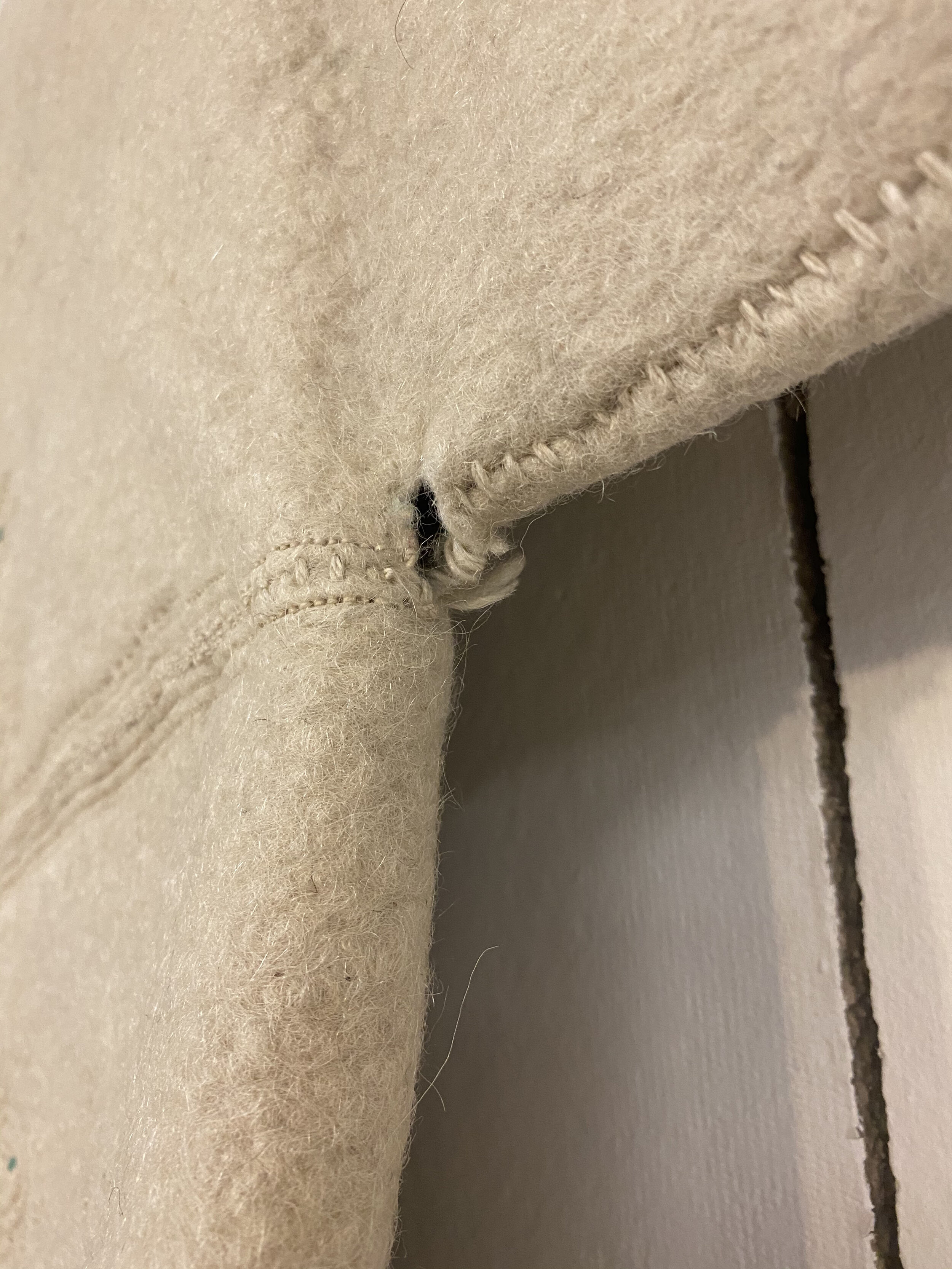
Seam slippage seen at the left underarm of the garment also signifying high usage and wear.
Home Workshop
Wet Felting:
Web Bonding by Friction Force + Hydrotangling
Follow along in real-time with the video below or check out the step-by-step instructions.

“Through the sacred work of the hand, we can inform the work of the mind.”
— Richard Sennet
Works Cited
Basilov, V. N. Nomads of Eurasia. Los Angeles, CA: Natural History Museum of Los Angeles County, 1989.
Bunn, Stephanie. Nomadic Felts. London: British Museum, 2010.
Burkett, M. E. The Art of the Felt Maker. Kendal (Cumbria): Abbot Hall Art Gallery, 1979.
Emery, Irene. The Primary Structures of Textiles. Washington, DC: The Textile Museum, 1966.
Dupaigne, Bernard and Francoise Cousin. Afghan Embroidery. Pakistan: Ferozsons (Pvt.) Ltd, 1993.
Gordon, Beverly. Feltmaking: Traditions, Techniques, and Contemporary Explorations. New York, NY: Watson-Guptill Publications, a division of Billboard Publications, 1980.
Harvey, Janet. Traditional Textiles of Central Asia. New York, NY: Thames and Hudson, 1996.
Lindisfarne, Nancy, and Bruce Ingham. Languages of Dress in the Middle East. Richmond, Surrey: Curzon, in Association with the Centre of Near and Middle Eastern Studies, SOAS, 1997.
Mullins, Willow. Felt. Oxford: Berg, 2009.











